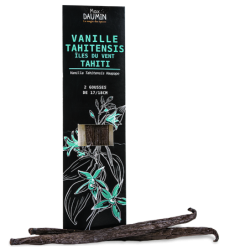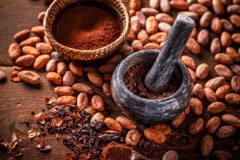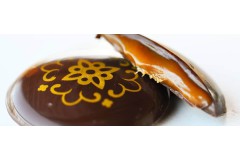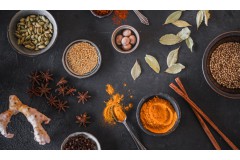short story:
The word vanilla comes from Vanilla in Spanish which means "pod". Indeed Herman Cortés led his first expeditions to the Aztec Empire in 1519 and brought it back to serve it to the Kingdom of Spain. She then entered the European royal courts. Conquered by vanilla, Louis XIV ordered that vanilla be produced at the Ile de la Réunion. But all attempts are ended in a failure, because only the endemic Mélipone bee in Mexico could fertilize vanilla.
In 1841, only 12 -year -old slave, Edmond Albius discovered a vanilla manual pollination technique that will explode vanilla production.
Tahiti between 1845 and 1848 different plants from different countries were introduced (Vanilla Planifolia de la Réunion, vanilla of Mexico, vanilla of the Philipines brought back by Admiral F. Hamelin who will define the base of the Vanilla tahitensis) . Vanille Pompona in 1850, then in 1874 of Mexico again. All these imports will give birth to the hybrid vanilla tahitensis and its 14 cultivars.
Botanical origin:
Tahitensis vanilla (vanilla tahitensis) prized by the great chefs is a different botanical variety of bourbon vanilla (vanilla planifolia). it's a Remarkable vanilla .
cultivated mainly in the Pacific, the Tahitensis vanilla is found in French Polynesia in the winds under the wind (Raiatea, Tahaa, Huaninée) and Wind Islands (Tahiti). The origin of this vanilla is not elucidated. She would seem to be a crossroads of vanilla Planifolia and vanilla odorata . Odorata vanilla is a very rare wild vanilla found in Belize and Guatemala forests, not marketed.
The vanilla genre belonging to the orchid family and has more hundred species. These are lianas growing on a tutor (natural or artificial). Only a few are marketed for taste purposes: we will note the vanilla tahitensis and vanilla pompona and vanilla planis . (Vanilla Bourbon)
The origin of our vanilla:
Our Tahitensis vanilla is cultivated by Sylvain our producer and preparer in Tahiti. He carries out a goldsmith's work.
cultivated only with natural means, carefully transformed for 5 months. He can obtain exceptional aromatic power for this variety. One of the keys he masters is to get down to 45% humidity (unusual rate in this genre) in order to promote an explosion of flavors. A captivating vanilla with prune, cocoa, anise, caramel, wood and last vanilla scents.
"A vanilla trainer magnifies the work of the vanillaeter to legal a cellar master who magnifies the work of the winemaker" Here is how he describes his job. We liked this. aromatic development goes entirely through the preparer's hands. Thus his vanilla will go through several stages to reach aromatic quintessence. He collects his ripe vanilla on lianas. It is a first point of differentiation. The majority are harvested when they are still a little yellow. Then they will go to the dark room to perfect their maturity. Again exposed to the sun, they will then be found in Faraoti (hermetic, opaque box) so that they can "sweat" and after again exposed to the sun. This repeated process for several weeks allows aromatic development. installed for 32 years in Tahiti, Sylvain stands out in the preparation of his vanilla. He made the choice of perfume and not water. Tahitensis vanilla on the market fluently have a humidity rate of around 60%, in him they are between 45 and 50% humidity in order to promote all aromatic wealth (and not weight by water its vanillas are regularly tested on aromatic compounds (vanillin, anise alcohol, vanillic acid, isovanillin, p-anic aldehyde, p-nisical acic, aldehyde phb, acidic acid PHB, Protocatechic aldehyde, Protocatechic acid). he obtains exceptional rates. not surprising that his vanilla is also found on starry tables. It holds the real black gold of the Pacific. Good day, max Daumin





